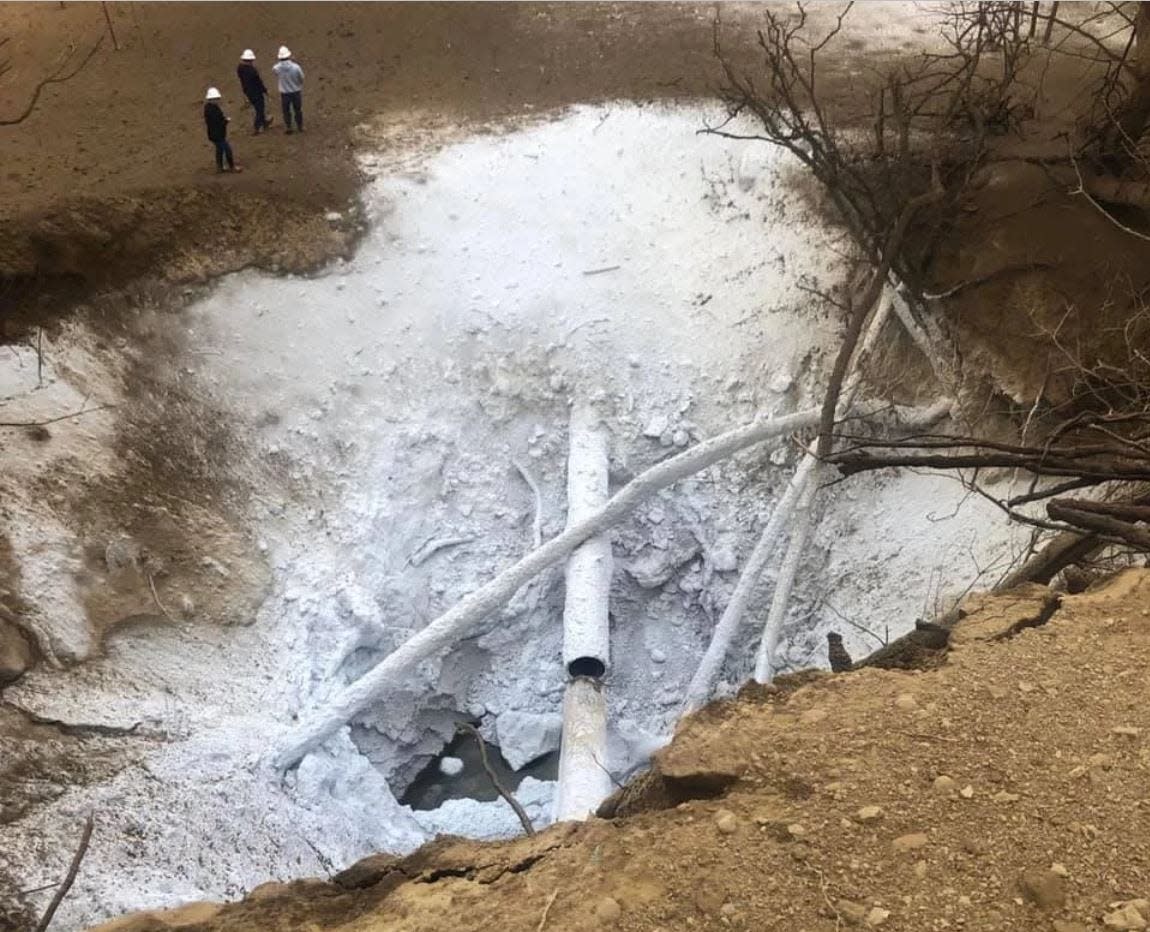Navigator’s carbon pipeline rupture modeling has some shortcomings, consultant testifies

As the evidentiary hearing for Navigator Heartland Greenway, LLC's proposed carbon dioxide pipeline continues into its second week, testimony Wednesday shed light on an important but undisclosed component of the system.
South Dakota Public Utilities Commission heard from Matthew Frazell, a consultant with Texas-based Environmental Resources Management, Inc, regarding Navigator's plume model information. This data is crucial to understanding how carbon dioxide is dispersed in the event of a pipeline rupture, including how far the gas ― a known asphyxiant at high concentrations ― can travel.
Navigator's Heartland Greenway System, a $3.2 billion endeavor, is expected to run through about 111.9 miles of eastern South Dakota farmland between Brookings, Lincoln, Minnehaha, Moody and Turner counties. If built, the proposed system will connect to five ethanol plants under POET, one of the largest biorefiners in the U.S., as well as a Valero Renewable Fuels plant.
Navigator's plume modeling data has remained confidential throughout the hearing process, but certain witnesses like Frazell have been privy to observing the report.
More: Attorney argues against 'destruction' of South Dakota way of life in Navigator pipeline hearings
Frazell, in both his in-person and written testimony, said Navigator's report had not provided adequate information to prove that the proposed pipeline would not harm residents or communities in the event of a rupture.
He also admitted he was concerned Navigator had not included high consequence areas, such as populated areas, drinking water sources and unusually sensitive ecological areas, in their initial dispersion analysis.
The confidential data itself is in some ways bare, Frazell also observed. Navigator's Air Dispersion Guidance report, which contains plume modeling data, contained "just tables of data." Frazell said the documentation does not include "outputs," or visualizations or useful reports showing how communities would be impacted.
"[Navigator] does a really good job of saying what was done, what we plan to do, but doesn't say inputs or visual outputs of which HCAs are impacted," Frazell said.
Brian Jorde, an attorney representing landowners affected by Navigator's pipeline, called Navigator's models into question while examining Frazell.
Navigator's confidential report, according to Frazell's written testimony, indicated the company used two different software, ALOHA (Area Location of Hazardous Atmosphere) and PHAST, to study dispersion of CO2 in the atmosphere, though the exact usage of the modeling programs was not specified.
Jorde questioned the quality of the information provided by the software, however.
The attorney asserted the modeling software demonstrates CO2 dispersion distances for perfectly flat plains, which would not suit South Dakota's varied landscape.
Asked by Jorde whether ALOHA and PHAST have little or no ability to account for complex variables that can affect plumes ― meteorology and terrain as prime examples ― Frazell affirmed with a "yes."
Despite these shortcomings, Frazell went on to say that these models are also the industry standard and sufficient for Navigator's purposes.
"The modeling can be very good, but there will be some differences in real world events," Frazell said.
He suggested more advanced software, such as computational fluid dynamics modeling, could be used to model CO2 releases near high consequence areas but stipulated "[CFD] wasn't originally designed for large products such as a pipeline."
PUC Chairperson Kristie Fiegen later took a turn to query Frazell on whether CFD would be more useful in understanding how CO2 dispersion by South Dakota's rolling hills and terra.
"You can definitely get more detailed," Frazell replied. "It might not change the dispersion distance … but it's definitely going to be more detailed."
PUC questions PHMSA's 'reactive' decisions
The Wednesday hearing also delved into how the federal Pipeline and Hazardous Materials Safety Administration enacts its procedures for emergencies related to pipelines.
William Byrd, president of RCP Inc, an engineering and regulatory firm that offers its services to PHMSA-regulated pipeline companies, testified on Wednesday about the relationship between pipeline company and the federal agency and how that interacts with preventing or responding to emergencies, among other things.
Byrd said Navigator has come up with a "laundry list" of modern techniques to detect a CO2 leaks. They largely haven't been finalized, Byrd clarified.
Related: Pipeline to 'nowhere': Navigator CO2 routes in flux as Illinois resists project
He also asserted all of their emergency response plans are "on the table."
"You kind of have to keep the book open on all of these emergency response planning procedures because you don't want to stick with something too early," Byrd said.
Byrd also testified on PHMSA's regulations on how companies operate their CO2 pipelines, calling them "effective."
However, Byrd also pointed to some of the gray areas within PHMSA's regulatory process. PHMSA, Byrd said, does not keep "definitive maps" of high consequence areas, and it is up to a pipeline operator to determine where those areas ― as well as places with unusually sensitive ecology ― exist.
"I think the approval of the pipeline should be contingent on 'do you believe the operator is going to do a competent job and PHMSA is going to do a competent job of overseeing this operator?'" Byrd said.
PUC Chairperson Kristie Fiegen would later lean into this assessment in her questioning of Byrd. She stated she believes PHMSA is "gray" and can sometimes be more "reactive than proactive" when it comes to safety guidelines.
Byrd agreed in part.
"That's what the public kind of expects. If something happens that's tragic, they expect the government to react to it and PHMSA reacts," Byrd said. "But the vast majority of PHMSA's efforts are proactive."
Dominik Dausch is the agriculture and environment reporter for the Argus Leader and editor of Farm Forum. Follow him on Twitter and Facebook @DomDNP and send news tips to ddausch@gannett.com.
This article originally appeared on Sioux Falls Argus Leader: Consultant: Navigator's pipeline rupture data has some shortcomings

